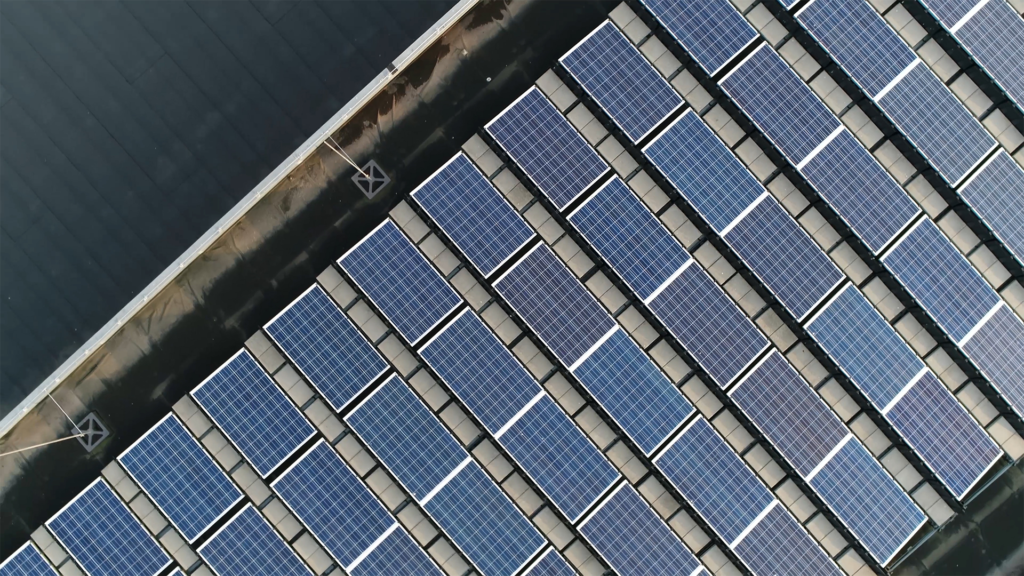Solar’s advancements and increased accessibility earn it more and more public attention. The Solar Energy Industries Association (SEIA) says the solar industry is growing at an unprecedented rate. However, with more attention comes more misinformation, misconceptions, and myths.
We at Convert Solar know that solar is complicated. We want to make it easy. If you’re researching a potential solar power system for your home or business, we want you to make an informed decision. So let’s break down some common myths.
Myth #1: Solar is only practical in the right climate
“For solar to be efficient, you must be in a sunny, arid environment like Arizona or New Mexico. But solar isn’t practical in Virginia.”
Advancements in solar make them practical and efficient in various regions. Yes, more sunlight produces more power. You might think that is a problem for a temperate climate like Virginia. In reality, you can still utilize solar and its cost-saving benefits even in the gloomy winter. If you’re concerned about snow days, that leads us to:
Myth #2: Solar doesn’t work on cloudy days.
“Solar’s great…when it’s sunny. But you don’t want an outage whenever the sun goes behind a cloud, do you?”

This is a common myth among opponents and skeptics of renewable energy. However, it is flat-out inaccurate. Solar works on cloudy days. Panels still function in indirect sunlight. Even on heavy overcast days, your panels will perform around 10-20% efficiency.
“But you can’t run off 20%? And what happens at night?”
Every solar power system can supplement low energy output in two major ways. Those are battery backups and being grid-tied. They often work in tandem with each other for consistent, ideal performance.
A battery is an optional upgrade we can install with your system. When your panels produce more energy than you need, the battery stores the surplus. So at night, you still have the power to keep the lights on.
Most Residental and commercial installations are grid-tied, meaning they are connected to the wider electrical grid. When you produce a surplus, that energy goes into the grid to power your community. So when you’re running on a deficit, you receive energy from your utility company. Being grid-tied and sharing the power are vital components of Net Metering.
Myth # 3: Net Metering sells your excess electricity back to the grid.
The statement above is mostly true, but “sells” is misleading. The Truth is more nuanced.
You might imagine your utility company sending you a check for the excess energy you supply. We wish it were that simple: don’t get us wrong! Net Metering is an excellent cost-saving tool, offering long-term savings. The surplus goes into the grid when you produce more power than you need. Instead of a direct payout, most utility companies offer credits that roll over.

Think of it as a bank account with energy as the currency. Without solar, you’re simply withdrawing from the account. You’ll have to pay the debt off at the end of the month. With solar, you make deposits during peak hours and smaller withdrawals year-round. Any net savings is rolled over as credit for the next month. Touching back on myth #1, you’ll probably save a lot during the summer and need to withdraw more in the winter.
At the end of the year, some utility companies give you an option. Your credits can roll over to the next year, or you can get a direct payout. Unfortunately, most utility companies don’t let credits roll over from year to year. So, if you have any annual savings, all of it disappears! That is why, when we design systems, we design them to function at or below your energy consumption. You’ll drastically reduce your utility bill, save in the long run, and you won’t leave anything on the table.
There is no one-size-fits-all answer to your utility company policy. We recommend researching your utility company to understand what they offer.
Myth #4: The Federal Solar Tax Credit program gives you money!
Like myth #3, it’s more complex. These misunderstandings fall under an umbrella myth of “they’ll pay you to go solar.”
The Solar Tax Credit is a federal program aiming to incentivize home installations. It’s a reduction in the taxes you owe. If you install solar, you will receive a tax credit for 30% of the net cost of installation.
Let’s see that with numbers. You purchase a solar power system for $32,000 (gross cost). Your installation qualifies for a state solar rebate of $1,500 and a $500 rebate from your utility company. That brings you to a net cost of $30,000. Tax season rolls around, and you owe $15,000. You apply your solar tax credit of $9,000 (30,000 x 0.3), reducing the amount you owe to $6,000. If you owe less than your tax credit, you can roll it over for up to five years.
Government-issued incentives are often convoluted and confusing. However, we can help you take advantage of them and get the most for your installation.
Myth #5: Bigger is always better!
“You’re going to need a lot of solar panels to reap the most rewards.”
Yes, the more panels you have, the more energy you will produce. The more energy you make, the more you can save and the quicker you can pay off the installation. However, going bigger is not always better.
Firstly, we just saw how producing more electricity than you need doesn’t serve you. Secondly, you might not need to cover your roof with panels. Or, if you don’t have a lot of roof space, you can utilize higher-performing, more efficient panels. Designing a solar power system is a balancing act of space, budget, and energy consumption.

Everyone’s different; each project is unique. So you need a system custom designed to your needs. This is how we develop ideal systems for our clients. First, you reach out to us with your goals in mind. We recommend sharing your electric bill to give us a starting point.
Then we schedule a face-to-face appointment whenever is convenient for you. We walk through your property together, answering any questions you might have. Once we analyze the details, we provide you with a solar site assessment. It details annual solar energy production, annual consumption offset, annual revenue, environmental benefits, cost, and financial analysis.
Conclusion
Ultimately, we want to give you all the information you need to make the best-informed decision. It’s a company value embedded in everything we do, from site assessments to blog content. So if you have any questions, curiosity, or concerns, check out our frequently asked questions or contact us directly.
